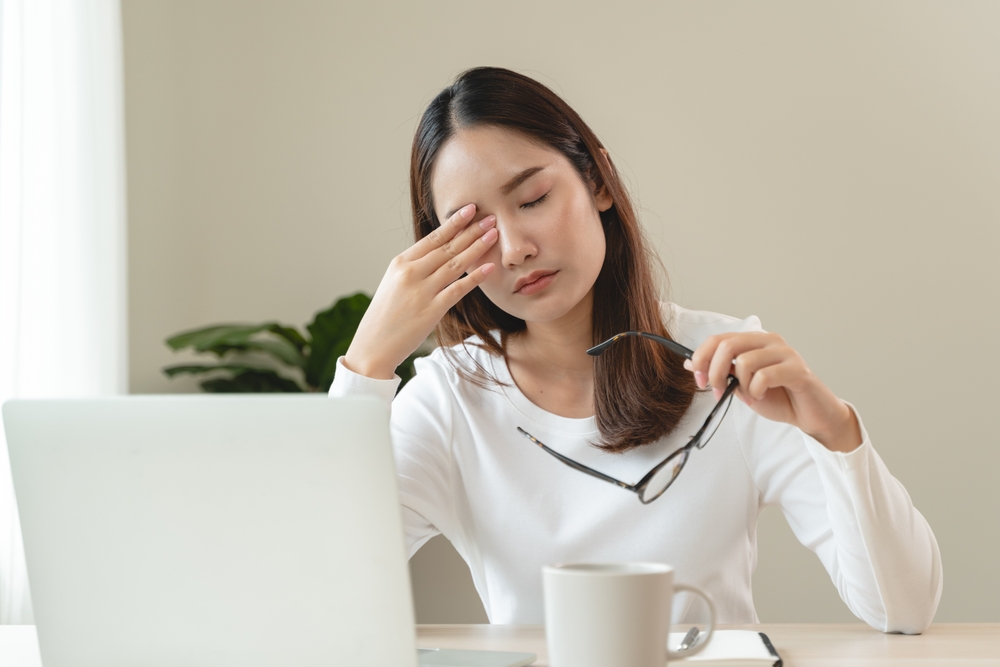
Dry eye is a common and often chronic condition that occurs when your eyes don't produce enough tears or the tears evaporate too quickly. This can lead to a range of uncomfortable symptoms that can significantly impact your quality of life. As you navigate the world with dry eyes, it's essential to understand the underlying causes, common symptoms, and personalized treatment options available to you.
Understanding the Causes of Dry Eye
Dry eye can be caused by a variety of factors, one of the most prominent being Meibomian Gland Dysfunction (MGD). The Meibomian glands are responsible for producing the oily layer of the tear film, which helps prevent tears from evaporating too quickly. When these glands become blocked or dysfunctional, the tear film loses its stability, leading to the uncomfortable symptoms of dry eye.
Aging is another contributing factor, as tear production naturally decreases as we grow older, making dry eye more likely. Additionally, certain medications, such as antihistamines, decongestants, and antidepressants, can reduce tear production, worsening dry eye symptoms. Medical conditions, including autoimmune diseases like Sjögren's syndrome, rheumatoid arthritis, and diabetes, are also linked to dry eye, as they can impact tear production and eye health.
Environmental factors play a role as well. Exposure to dry, windy, or low-humidity conditions can increase tear evaporation, while prolonged screen time can strain the eyes and reduce blinking, exacerbating dry eye symptoms.
Common Symptoms of Dry Eye
Dry eye can manifest in a variety of uncomfortable symptoms, including:
• Persistent Dryness: You may experience a constant feeling of dryness, grittiness, or a burning sensation in your eyes.
• Irritation and Redness: Your eyes may appear red and feel irritated, often accompanied by a stinging or itching sensation.
• Blurred Vision: Dry eyes can interfere with your visual clarity, making it difficult to focus or see clearly.
• Sensitivity to Light: Bright lights, sunlight, or even the glare from digital screens can cause discomfort and pain in dry eyes.
• Watery Eyes: Dry eyes can sometimes lead to excessive tear production as your body tries to compensate for the lack of moisture.
• Difficulty with Daily Activities: Severe dry eye can make it challenging to perform everyday tasks, such as reading, driving, or using a computer for extended periods.
How is Dry Eye Diagnosed and Treated?
To diagnose dry eye, your optometrist will typically conduct a comprehensive eye examination. This may include a tear film evaluation to assess the quality and quantity of your tears and the health of your tear-producing glands. A slit-lamp examination, which uses a microscope to closely inspect your eyes, can help identify any structural or functional issues contributing to dry eye. Additionally, a tear osmolarity test may be performed to measure the concentration of your tears, providing valuable information about the severity of the condition.
Depending on the underlying cause and severity of your dry eye, your eye doctor may recommend a range of personalized treatment options, including:
• Artificial Tears: Over-the-counter eye drops or lubricants can provide immediate relief by supplementing your natural tear production.
• Prescription Eye Drops: In more severe cases, your eye care professional may prescribe prescription eye drops to help reduce inflammation and improve tear production.
• Lid Hygiene Treatments: For Meibomian Gland Dysfunction, treatments like warm compresses, eyelid cleansers, and in-office procedures can help unblock and improve the function of your Meibomian glands.
• Nutritional Supplements: Certain dietary supplements, such as omega-3 fatty acids, may help reduce inflammation and improve tear quality.
• Punctal Plugs: In some cases, your optometrist may recommend the temporary or permanent placement of small plugs in your tear ducts to help retain moisture in your eyes.
• Lifestyle Modifications: Simple changes to your environment, such as using a humidifier or limiting screen time, can also help alleviate dry eye symptoms.
Optimizing Your Eye Health and Comfort with Pointe Vision Care
Dry eye is a complex and often chronic condition that can significantly impact your quality of life. By understanding the underlying causes, common symptoms, and personalized treatment options available, you can take proactive steps to manage your dry eye and maintain the health and comfort of your eyes. The key to finding relief is working closely with your optometrist to develop a tailored treatment plan that addresses your unique needs.
If you're experiencing persistent dry eye symptoms, schedule a consultation with Pointe Vision Care. Contact our office in Grosse Pointe Woods, Michigan, by calling (313) 546-0600 to book an appointment today.








